Excerpts from Jim Conrad's
Naturalist Newsletter
from the May 19, 2013 Newsletter issued from the Frio Canyon Nature Education Center in northern Uvalde County, southwestern Texas, on the southern border of the Edwards Plateau; elevation ~1750m (~5750 ft); N29.62°, W99.86°; USA
RESCUEGRASS
Despite the temperature in Uvalde already breaking 100° this week (38°C), around the cabin most of the grass is still winter brown, the drought suppressing all but modest sprouting of green shoots. However, where water from a few small showers has dripped off roofs and where laundry water escapes onto the ground, there are spots of lush grass. Nowadays one common grass citizen in these spots already has produced its flowers and now is drying up, with its fruiting heads ready to distribute seeds, as shown below:
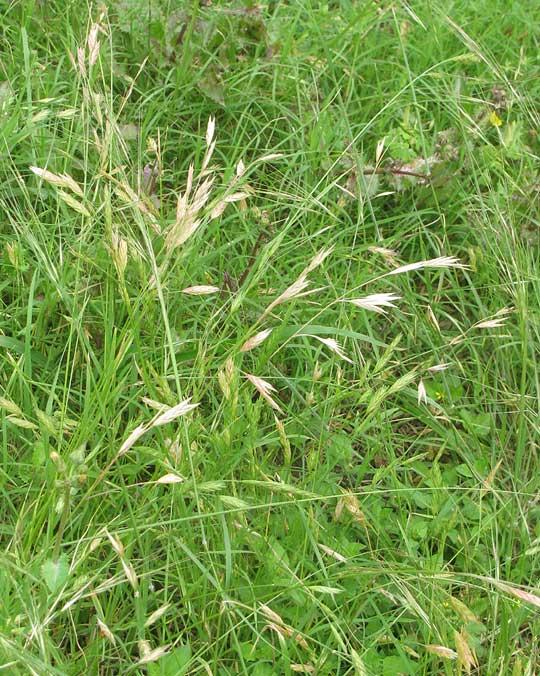
An inflorescence displaying the grass's large, flattish spikelets on slender, curving pedicels is shown below:
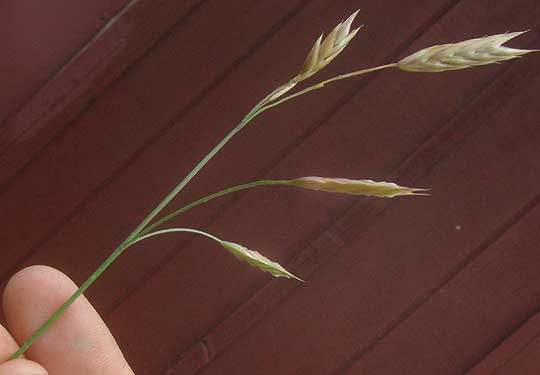
The individual spikelets are handsome, even elegant, as shown below:
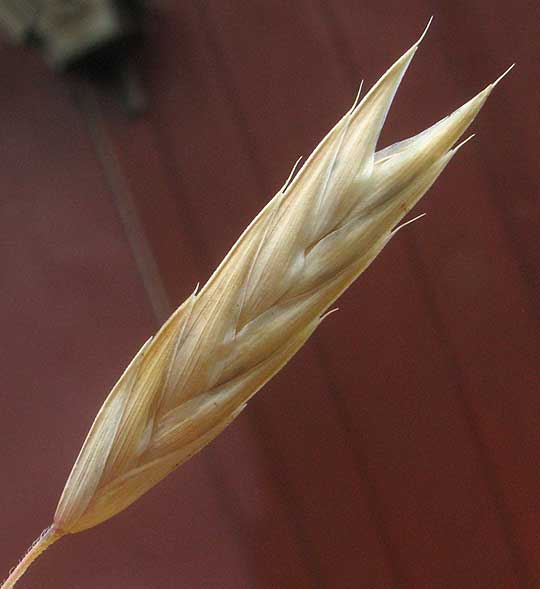
Notice that the bract-like "lemmas" of each of the spikelet's florets is tipped with a slender, needle-like "awn."
When a spikelet is mature, it dries pale dun color and its florets break from one another -- they disarticulate -- so that each floret falls to the ground carrying a grain inside it, and a short section of its disarticulated stem, or "rachilla." Such disarticulated florets are shown below:
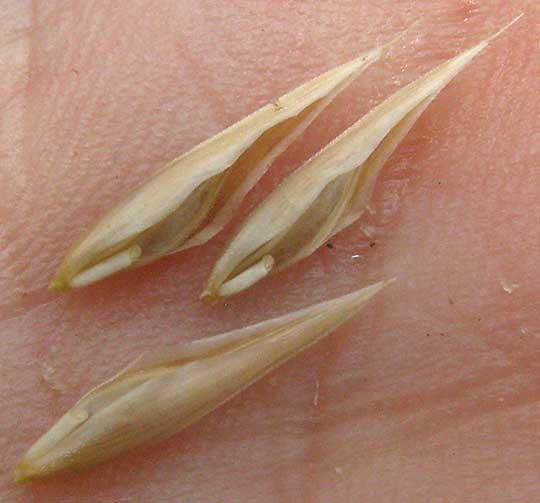
In grass identification, often it's important to look where the blades attach to the cylindrical stem, to see if there are "ligules" present and, if so, what the ligules look like. Below you can see a silvery, cellophane-like, jagged-edged ligule at a blade base pulled away from the stem of our grass:
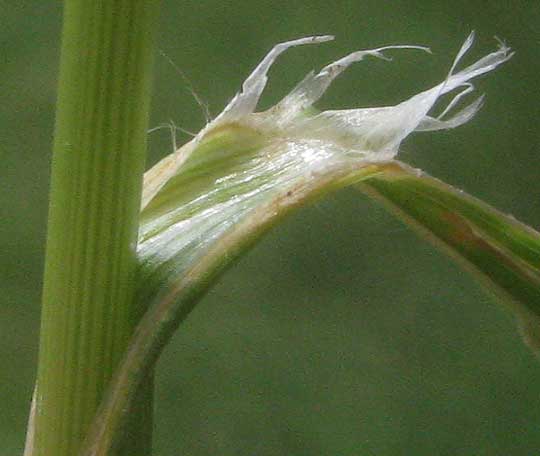
With our grass, however, as soon as I saw how large and flattish the long-pediceled spikelets were, and that the lemmas were tipped with slender awns, I had a hunch what group of grasses, or genus, we had here, so looking for a ligule wasn't important. There's a large, commonly occurring genus (over 50 species listed for North America) producing big, flattish, long-pediceled spikelets just like the ones in our photo. To make sure you have a species of that large, commonly occurring genus you need to take a very close look at the awns. A close-up showing how our grass's awns attach to the tips of its florets' lemmas is shown below:
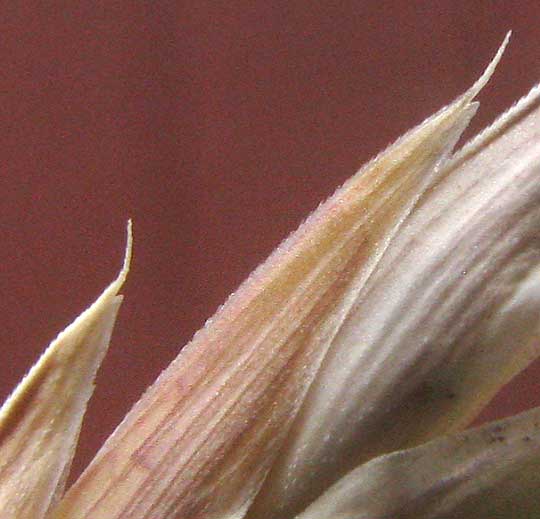 .
.
Can you see that the lemma tips are shallowly notched, and that the short awns arise from inside the notch?
That tiny feature -- lemmas with notched tips and the awn arising from inside the notch -- is the glorious field mark that announces that you have a member of that big, commonly occurring genus, which is Bromus. Species of Bromus are referred to collectively as brome-grasses. So, which of the 50 or so brome-grasses found in North America is this?
"Keying out" this species was fairly easy because it has some unusual features. First, maybe you noticed in the picture of the entire spikelet that each lemma bore a well defined ridge, or "keel," down its back. The lemmas of most Bromus species are more rounded-backed and lack such conspicuous keels. Second, notice that each lemma bears about four parallel "veins" on each side, so with two sides and keel, that's nine veins per lemma. The lemma keels of most Bromus species display fewer than nine veins. Finally, the vast majority of other Bromus species bear much longer awns. The shortness of this species' awns is really remarkable.
So, here we have a grass most commonly known as Rescuegrass. It's BROMUS CATHARTICUS, a native of South America but much introduced in North America and other continents as a forage crop. Nowadays Rescuegrass is firmly established in much of North America, particularly in the southern half of the United States, mostly on disturbed soils. In other words, it's an invasive weed, but one ranchers like to have because it makes good forage for livestock.